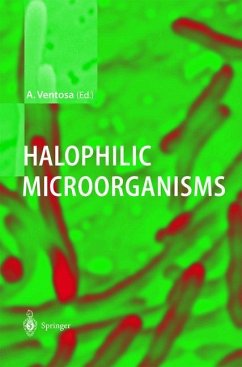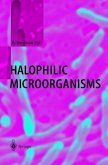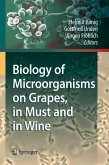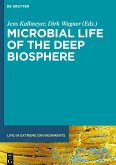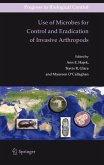Various groups of microorganisms - bacteria, archaea, algae and even fungi - have adapted to a life in a hypersaline environment. Halophilic Microorganisms explores the many-fold aspects of life under these extreme conditions. Several contributions analyze the microbial communities in different hypersaline environments such as salterns, soda lakes, and the Dead Sea or salt sediments. Reviews of their biodiversity, phylogeny, and genetics are given as well as of the diverse adaptation strategies of salt-tolerant or salt-requiring microorganisms. Microorganisms that have adapted to moderate salt concentrations or to habitats with drastic fluctuations are also treated in addition to the extreme halophiles. Their physiological, biochemical and molecular mechanisms developed in response to salinity and high osmotic pressure as well as current and future biotechnological applications are presented.
Microorganisms from extreme environments have attracted the attention of many scientists and are currently one of the main focuses of research due to the fascinating mechanisms that they display in order to live under extreme conditions.One of the basic aspects of study in extremophiles is to unravel the adaptation mechanisms of these microorganisms to the severe conditions of temperature,pH or salinity of extreme habitats,and certainly the results will permit interesting developments in the future.Moreover,the extensive studies carried out during recent years have made it possible to use them as cell f- tories to produce new compounds of biotechnological importance and to develop new strategies for industrial processes. Besides thermophiles,hyperthermophiles,alkaliphiles,acidophiles or p- chrophiles,one of the most interesting groups of extremophiles is costituted by the halophilic microorganisms.These organisms require high levels of salt to grow and are common inhabitants of hypersaline environments, such as lakes,salterns or saline soils.This book is devoted to the salt-loving mic- organisms and focuses on different aspects of halophilic Archaea, Bacteria and Eukarya.
Hinweis: Dieser Artikel kann nur an eine deutsche Lieferadresse ausgeliefert werden.
Microorganisms from extreme environments have attracted the attention of many scientists and are currently one of the main focuses of research due to the fascinating mechanisms that they display in order to live under extreme conditions.One of the basic aspects of study in extremophiles is to unravel the adaptation mechanisms of these microorganisms to the severe conditions of temperature,pH or salinity of extreme habitats,and certainly the results will permit interesting developments in the future.Moreover,the extensive studies carried out during recent years have made it possible to use them as cell f- tories to produce new compounds of biotechnological importance and to develop new strategies for industrial processes. Besides thermophiles,hyperthermophiles,alkaliphiles,acidophiles or p- chrophiles,one of the most interesting groups of extremophiles is costituted by the halophilic microorganisms.These organisms require high levels of salt to grow and are common inhabitants of hypersaline environments, such as lakes,salterns or saline soils.This book is devoted to the salt-loving mic- organisms and focuses on different aspects of halophilic Archaea, Bacteria and Eukarya.
Hinweis: Dieser Artikel kann nur an eine deutsche Lieferadresse ausgeliefert werden.
From the reviews: "The origin of this book is an international meeting held on halophilic microorganisms, organized in Seville, Spain, in 2001. In 22 chapters contributed by more than 100 authors, each a specialist in his field, numerous facets of the biology of these extremophilic organisms ... are dealt with ... . this book is a must for every researcher motivated by studies on these halophilic organisms." (Klaus Hausmann, European Journal of Protistology, Vol. 41 (1), 2005)
